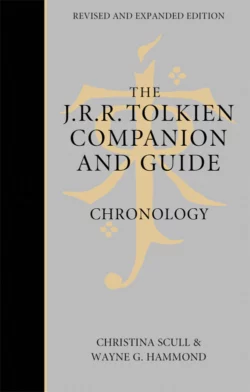The J. R. R. Tolkien Companion and Guide: Volume 1: Chronology

Christina Scull и Wayne Hammond
Тип: электронная книга
Жанр: Критика
Язык: на английском языке
Стоимость: 3591.93 ₽
Статус: В продаже
Издательство: HarperCollins
Дата публикации: 16.04.2024
Отзывы: Пока нет Добавить отзыв
О книге: Volume 1 of the most comprehensive in-depth companion to Tolkien’s life and works ever published, including synopses of all his writings, and a Tolkien gazetteer and who’s who.The J. R. R. Tolkien Companion and Guide is a comprehensive handbook to one of the most popular authors of the twentieth century.One of two volumes comprising this definitive work, the Chronology traces J.R.R. Tolkien′s progress from his birth in South Africa in 1892, to the battlefields of France and the lecture-halls of Leeds and Oxford, to his success as the author of The Hobbit and The Lord of the Rings, until his death in 1973.It is the most extensive biographical resource about Tolkien ever published. Thousands of details have been drawn from letters, contemporary documents in libraries and archives, and a wide variety of other published and unpublished sources. Assembled together, they form a revealing portrait of Tolkien in all his aspects: the distinguished scholar of Old and Middle English, the capable teacher and administrator, the devoted husband and father, the brilliant creator of Middle-earth.